 Go
to the Archive index
Go
to the Archive indexWell, it had to be, didn't it? Following the look at George Wallis's three wheelers, the Ariel Three is the logical follow-up.
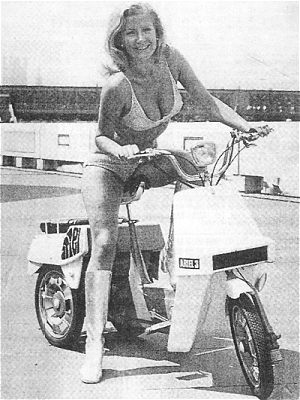
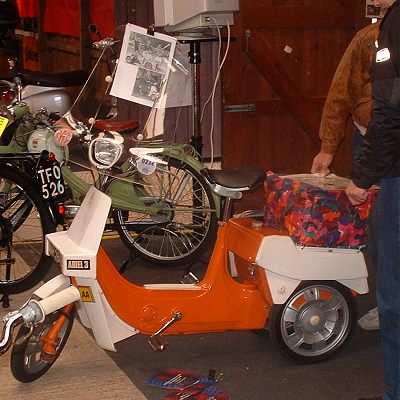
The advertising slogan that BSA thought up for the Ariel Three probably demonstrates how much faith BSA had in the little machine - not much. However, they did tool up to produce them at the rate of 2,000 a week, which was a bit on the over-optimistic side.
Looking to get into the moped market and wanting something a bit different from other mopeds, BSA bought the manufacturing rights to G L Wallis & Son's three-wheeler. With the purchase of the rights, G L Wallis became consultants to BSA - but weren't consulted. According to Stan Jackson, one of the three members of the Wallis design company, "the Ariel was designed by BSA design staff who would not take any advice or suggestions on the design". Other sources state that it was not BSA's normal motor cycle design staff, based at the Group Engineering Centre in Unberslade Hall, that worked on this project. New staff recruited from the aircraft industry produced the design.
Back to Stan Jackson: "When the first prototype was shipped to us we were appalled at the mistakes they had made and, after many trips to Birmingham, some of the problems were corrected and the unit was put into production".
"The Ariel was a disaster; it was badly produced, unreliable, badly advertised and did not sell."
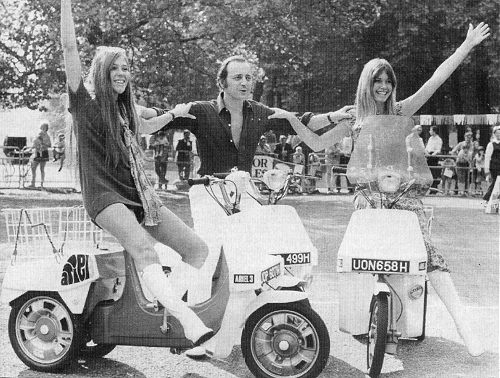
A Hit or A Miss?
Cindy Kent, David Jacobs and Olivia Newton-John try to make the
Ariel Three seem glamorous
That's probably an exaggeration - badly advertised, certainly, and it did not sell in sufficient numbers to help BSA out of its financial troubles, but it proved to be quite reliable.
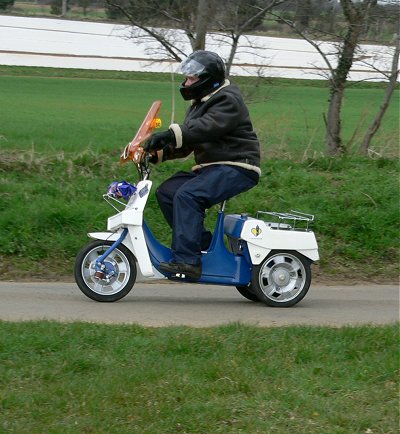
The power unit of the Ariel Three was based on an engine extensively used in other mopeds: a 49cc Anker of Dutch origin. It is quite a powerful little unit and capable of more output than it gives in the Ariel, where its performance is restricted by a small carburettor. The transmission is via a toothed belt and a chain; there is neither gearbox nor any variable pulley mechanism - just a centrifugal clutch.
The three wheels, running on 2.00 × 12 tyres, are all the same and a spare wheel can be carried on top of the rear box. In the event of a puncture, just change the wheel like on a car: the Ariel Three was definitely aimed at the non-motorcyclist.
It did sell, although never in as great numbers as BSA had hoped, and with hindsight is now saddled with some of the blame for BSA's demise. The truth is probably that the company was already in terminal decline and the Ariel Three was a symptom of it desperately trying to find something... anything... that might make a profit.
Nowadays, the Three is enjoying a bit of a revival amongst moped enthusiasts. A few will turn up at most club events. Its robust engine and luggage carrying ability make it a good choice for the sort of enthusiast who believes that mopeds were made to be ridden. The picture below illustrates this point, showing three NACC members 'somewhere in France'. They are returning from the 1997 Rando Cyclos at Sars Poteries - the second year running that they rode all the way to and from this event.
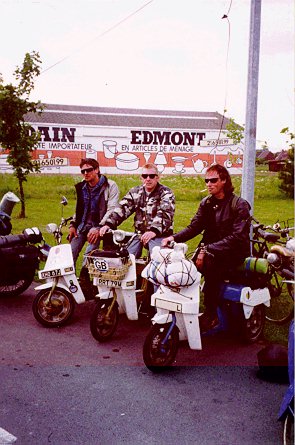
First published in December 1997, revised and expanded in March 2005